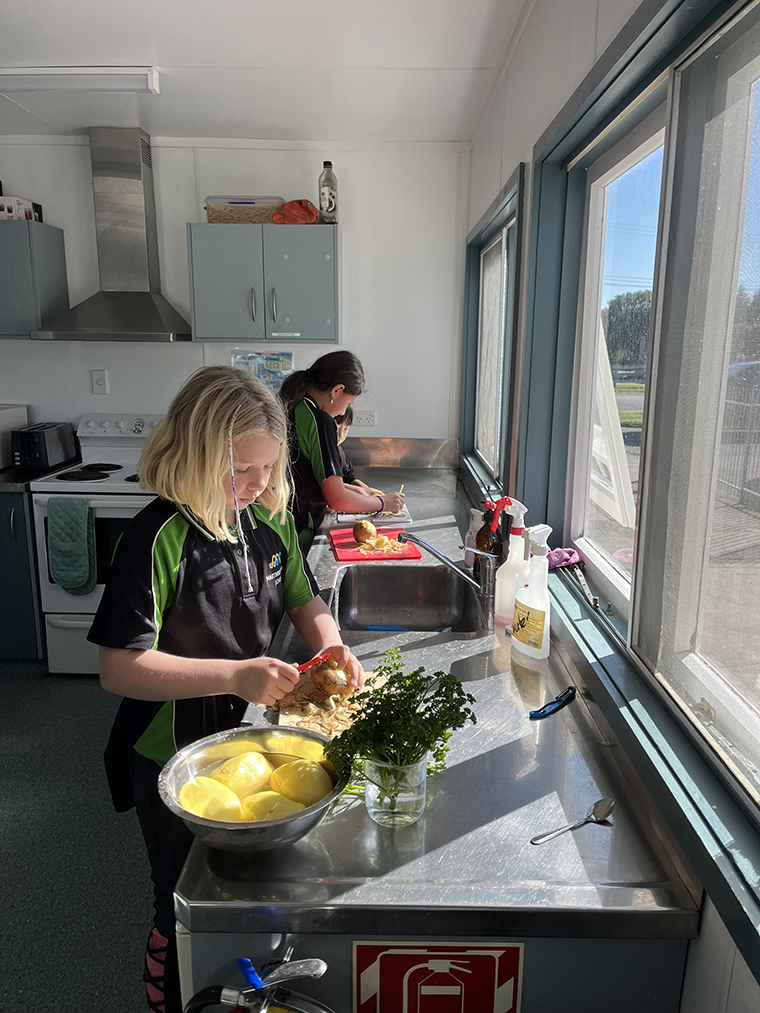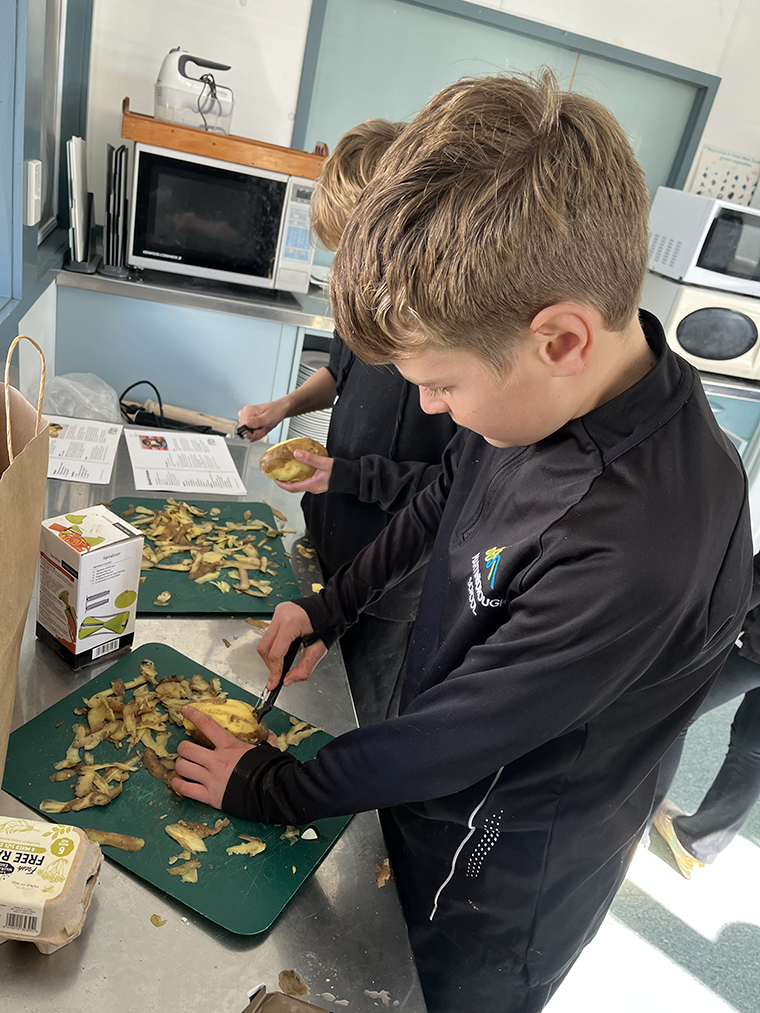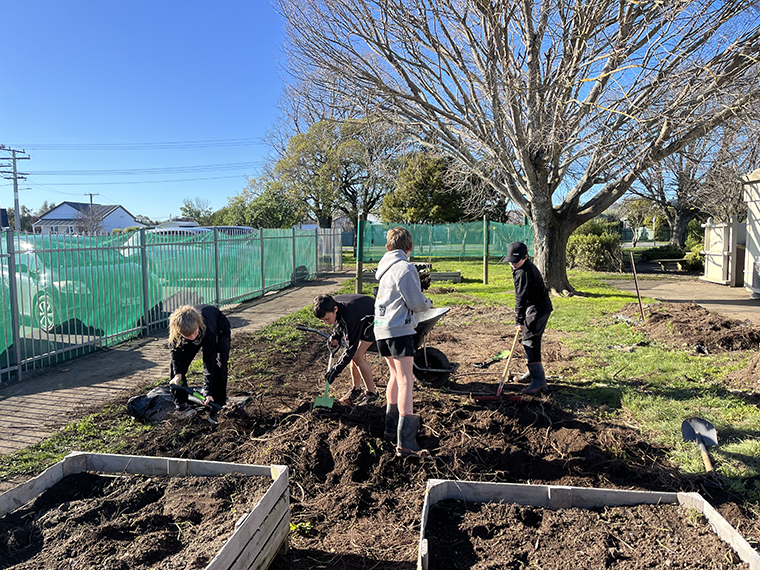I’m with Courtney Miles, a teacher at Martinborough School, who co-ordinates a Garden to Table programme at the school. She’s bubbling with excitement about how much the children love it.
It’s the first thing new pupils joining her class at the beginning of the year ask about. She seems to have a lot of knowledge on the topic but tells me that it hasn’t always been the way. It was only the restrictions imposed by Covid that led her to learning how to produce her own food. Looking back, she feels that gardening contributed hugely to her wellbeing at that difficult time. It also helped that her partner was an excellent cook who could transform the produce that she was growing into wonderful dishes.
The Garden to Table programme is run nation wide with over 300 schools participating. It’s co-ordinated by a charitable trust that provides resources and guidance from a team of people based around the country. Courtney works with her class of 11–12 year-olds, who she believes are at the perfect age to benefit from the programme. She can see how it improves the children’s feeling of wellbeing. It also makes them more aware of environmental issues, teaches them skills to grow plants, provides an outdoor activity and involves them with the community. There are three adult volunteers who help Courtney.
Each session is for two hours and is run three times a term. The class is divided into three, with one group in the kitchen cooking, one tending the garden and one setting the table up for the meal. The last half hour is discussion on environmental issues like food miles and the benefits of growing your own food. Then they sit down together at a long table to share the kai they have produced. They just sit quietly for a few minutes contemplating what they have done as a group. There is karakia before eating. Courtney feels that the whole process brings the children closer together, with them recognising the rewards of working as a group. “They strongly take ownership of the garden. Every lunchtime you can see children out there, clearing the area and then tending the garden. It’s very important to them.”


The programme fits well into the curriculum. There is maths needed for measuring out ingredients and the cooking, science for understanding the natural environment and reading for interpreting the recipe. Courtney relates to me an example of their learning process. “They worked out that they had to read the instructions carefully because initially they just put all the ingredients listed into a bowl together, stirred, then cooked and thought that was it. They soon realised that they needed to follow the individual steps for the recipe to work.”
Walking around the garden area in one corner of the school grounds, I’m impressed by the scale of it. There are eight very large planter boxes waiting for the layers of the “no-dig garden” ingredients to be placed and the new season’s vegetables planted. There are fruit trees carefully espaliered onto a fence surrounding the area. Courtney has a long-term vision for the project, where eventually they will be able to grow enough for the children to take produce home to their families. Already two other classes are participating in the programme and she would like more to join. And then there’s the irrigation system that needs to be set up! I’ll be watching their progress with interest each time I pass by.



